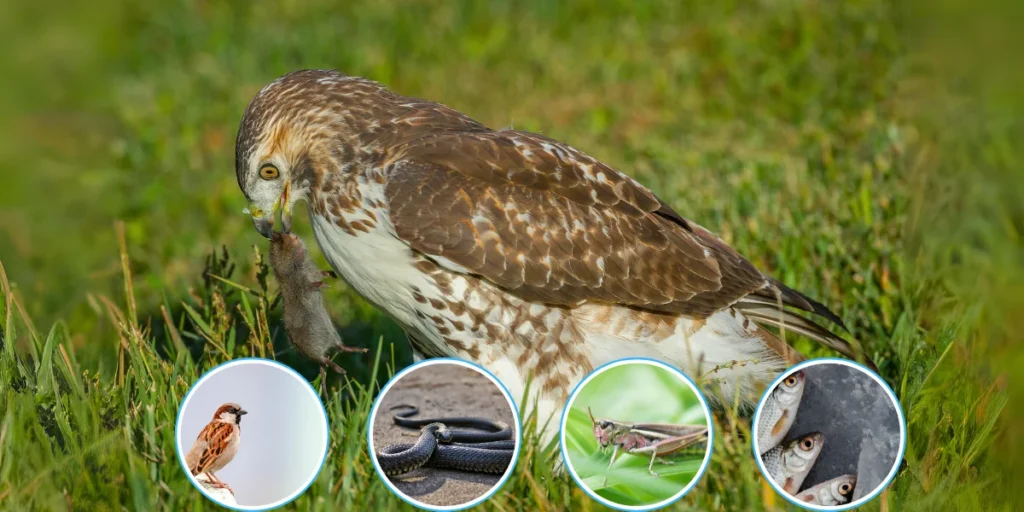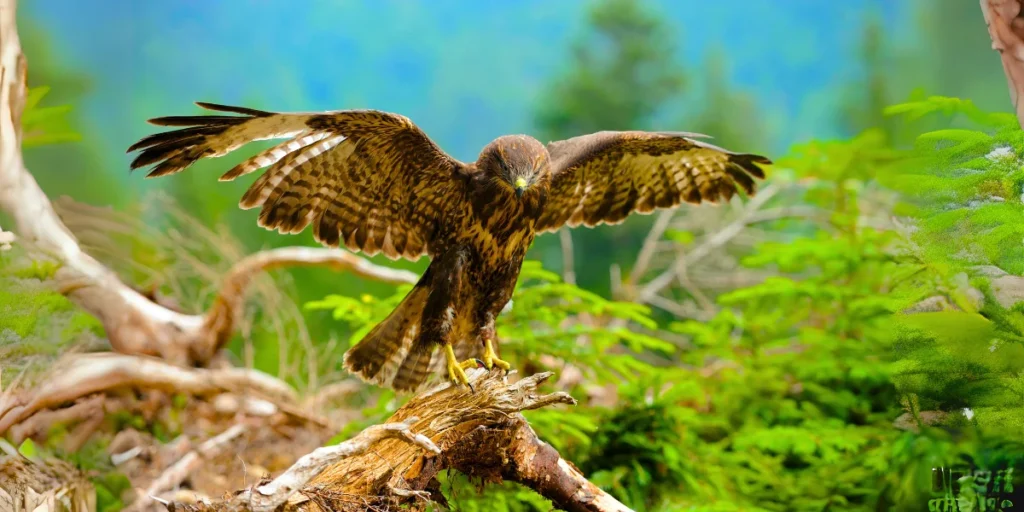Hawks are powerful and skilled birds of prey that have captured the interest of bird enthusiasts and nature lovers for centuries. Known for their keen eyesight, sharp talons, and impressive hunting skills, hawks are among the most efficient predators in the sky. But one question often comes up: Do hawks hunt at night?
In this article, we will explore the truth about whether hawks hunt at night, their hunting behaviors, diet, and how they fit into the natural world. Let’s dive into a detailed yet easy-to-understand guide to understand these amazing creatures.
Understanding Hawks: Are They Day or Night Hunters?
To answer the main question right away—hawks are diurnal, which means they are active during the daytime. Unlike nocturnal birds like owls, which are adapted to hunting at night, hawks rely heavily on daylight to find their food. Their sharp vision works best in bright light, making them perfect hunters under the sun.

Why Don’t Hawks Hunt at Night?
Here are some simple reasons why hawks don’t usually hunt at night:
- Eyes Built for Daylight: Hawks have incredible eyesight, but it’s designed to work best in bright light. Their eyes are full of cone cells that help them see fine details and colors. This allows them to spot prey from far away, but these eyes don’t work well in low light or darkness.
- Lack of Night Vision Adaptations: Unlike owls, which have large eyes to gather as much light as possible, hawks cannot see clearly in the dark. Owls also have ears that help them locate prey by sound alone, which hawks lack. Hawks rely mainly on their sight to hunt.
- No Need for Night Hunting: Hawks are very efficient hunters during the day, so they don’t need to hunt at night. The animals they eat, like rodents, birds, and small mammals, are usually more active during the day. Hawks are already well-adapted to catch these animals in daylight.
Rare Exceptions: Do Hawks Ever Hunt at Night?
While hawks are not usually active at night, there are some exceptions:
- Hunting Under Artificial Lights: In cities or well-lit areas, some hawks might use streetlights or bright lights to catch prey. For example, if there are mice or other small animals active under these lights, hawks might take advantage of the situation.
- Dusk or Dawn Hunting: Some hawks may hunt during twilight hours (right before sunrise or after sunset) when there is still a bit of light left. This happens mainly during times when food is scarce, like in winter when days are shorter.
How Do Hawks Hunt?
Now that we know hawks are daytime hunters, let’s dive into how they hunt. Hawks have developed different strategies to catch their prey efficiently. Their methods vary depending on the type of hawk and the habitat they live in.
1. Keen Eyesight for Spotting Prey
Hawks have some of the best eyesight in the animal kingdom. It’s estimated that a hawk’s vision is 8 times sharper than that of a human. They can see tiny movements from hundreds of feet away, allowing them to spot small animals like mice or rabbits on the ground.
Hawks use their keen vision to:
- Spot prey from high up: While flying or perched on a tree, they scan the ground below for any signs of movement.
- Detect colors and details: Unlike many animals, hawks can see colors, which helps them identify prey hidden among leaves or grass.
2. Swift and Powerful Attacks
Once a hawk spots its prey, it wastes no time. It dives down at incredible speeds, sometimes reaching up to 120 miles per hour. This dive is called a stoop, and it helps hawks catch their prey by surprise.
- Using Speed: The hawk’s dive is quick and powerful, giving the prey very little time to react.
- Strong Talons: Hawks have extremely sharp claws that can grab and kill their prey instantly. These talons are their main weapon.
3. Ambush Hunting Techniques
Some hawks are experts at ambush hunting. Instead of flying around looking for prey, they perch on a branch and wait quietly for something to come close. When a bird or small animal comes into range, the hawk quickly grabs it.
- Cooper’s Hawk and Sharp-shinned Hawk are examples of hawks that use this method, especially in wooded areas where flying quickly between trees is an advantage.
What Do Hawks Eat? A Closer Look at Their Diet
Hawks are carnivores, which means they eat meat. But their diet can vary depending on the species of hawk, where they live, and what’s available in their environment. Here’s a breakdown of what hawks like to eat:
| Type of Prey | Examples | How They Hunt |
|---|---|---|
| Small Mammals | Mice, rats, squirrels, rabbits | Spotting from high above, diving down |
| Birds | Sparrows, doves, pigeons | Fast chases, ambushing in trees |
| Reptiles & Amphibians | Snakes, lizards, frogs | Hunting in open fields or marshes |
| Insects | Grasshoppers, beetles, crickets | Catching on the ground or in flight |
| Fish | Mainly by Ospreys (fish hawks) | Grabbing fish from water with claws |

Breakdown of Hawks’ Diet:
- Small Mammals: Many hawks, like the Red-tailed Hawk, rely on small mammals like mice, rats, and rabbits. These animals are easier to catch during the day when they are active.
- Birds: Hawks like the Cooper’s Hawk and Sharp-shinned Hawk are specialists in hunting other birds. They use their speed and agility to chase birds through the air or ambush them from a hidden perch.
- Reptiles & Amphibians: In warmer regions, hawks also eat reptiles like snakes and lizards. This is common in open fields or near water sources.
- Insects: Some hawks, especially during the warmer months, will catch large insects. These are usually an easy and quick meal.
- Fish: While most hawks don’t hunt fish, the Osprey is an exception. Ospreys have sharp claws and special pads on their feet to grip slippery fish.
How Hawks Help the Environment
Hawks play a crucial role in keeping nature in balance. Here’s how:
- Controlling Animal Populations: By eating rodents, insects, and other small animals, hawks prevent these populations from getting too large, which helps protect crops and reduce pests.
- Promoting Healthy Prey: Hawks often catch the weaker or slower animals, which helps keep prey populations healthy by removing the sick or weak individuals.
- Indicators of a Healthy Ecosystem: The presence of hawks in an area often means the environment is healthy. If there are enough prey and good habitat, hawks will thrive.

Can Hawks Live in Cities?
As humans expand into natural areas, some hawks have adapted to city life. In urban areas, hawks can often be seen hunting pigeons, rats, and squirrels. Here’s how they’ve adapted:
- Using Buildings as Perches: Tall buildings in cities act like cliffs, giving hawks a high perch to spot prey.
- Hunting Urban Prey: Hawks have learned to catch common city animals like pigeons and rats. These are plentiful in cities, making them easy targets.
Even in cities, hawks remain daytime hunters and are most active in the morning and late afternoon when their prey is also more active.
Do Hawks Ever Hunt in the Dark?
The simple answer is no—hawks are not nighttime hunters. Their sharp eyes are built for daylight, and their hunting skills are best suited for bright conditions. While they might sometimes use artificial lights or hunt in twilight, this is rare and not their usual behavior.
Conclusion: Hawks Are Daytime Hunters
In summary, hawks are skilled hunters that excel during the day. They rely on their sharp eyesight, fast dives, and strong talons to catch prey efficiently. Although they can sometimes adapt to different environments, such as urban areas, they are not designed for hunting in the dark.
By understanding the behavior, diet, and hunting techniques of hawks, we can better appreciate these amazing birds and their role in our ecosystems. So, the next time you see a hawk soaring in the sky, you’ll know it’s on the lookout for its next meal—during the day!
FAQs
1. Do hawks hunt at night?
No, hawks are diurnal and hunt during the day.
2. Why don’t hawks hunt at night?
Hawks lack night vision; their eyes are adapted for daylight.
3. What do hawks eat?
They eat small mammals, birds, reptiles, insects, and fish.
4. How do hawks catch their prey?
Hawks use keen eyesight, swift dives, and sharp talons.
5. Can hawks hunt in cities?
Yes, they can hunt pigeons, rats, and squirrels in urban areas.
6. Do hawks ever hunt at dusk?
Sometimes, but only in low light, not complete darkness.

1 thought on “Do Hawks Hunt at Night? Discover Their Hunting Habits & Diet”